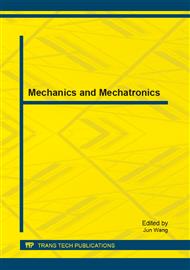[1]
Tian Shiyang, Nie Rongzhi. Characteristics of water delivery and methods of stable water diversion in YinLuan River Open Channel: Haihe Water Resources Vol. 6 (1999), pp.21-22.
Google Scholar
[2]
Gao Ying, Yang Jing, Song Wenjie. Prevention of water pollution emergencies and disposal in YinLuan River Open Channel: Haihe Water Resources Vol. 1 (2009), pp.21-22.
Google Scholar
[3]
Ying Li, etal. Establishing indices for groundwater contamination risk assessment in the vicinity of hazardous waste landfills in China: Environmental Pollution Vol. 165 (2012), pp.77-90.
DOI: 10.1016/j.envpol.2011.12.042
Google Scholar
[4]
Michael Goss, Charlene Richards. Development of a risk-based index for source water protection planning, which supports the reduction of pathogens from agricultural activity entering water resources: Journal of Environmental Management Vol. 87 (2008).
DOI: 10.1016/j.jenvman.2006.12.048
Google Scholar
[5]
Y.Y. Zhao, Y.S. Pei. Risk evaluation of groundwater pollution by pesticides in China: a short review: Procedia Environmental Sciences Vol. 13 (2012), pp.1739-1747.
DOI: 10.1016/j.proenv.2012.01.167
Google Scholar
[6]
Uwe Buczko, Rolf O. Kuchenbuch. Environmental Indicators to Assess the Risk of Diffuse Nitrogen Losses from Agriculture: Environmental Management Vol. 45 (2010), pp.1201-1222.
DOI: 10.1007/s00267-010-9448-8
Google Scholar
[7]
Pang Yong, Xu Qiuxia. Source water pollution risk discrimination technique and its application: Environmental Monitoring and Forewarning Vol. 1 (2009), pp.1-4.
Google Scholar
[8]
Ji Zhengang, Hu Guangdou, Shen Jian, Wan Yongshan. Three-dimensional modeling of hydrodynamic processes in the St. Lucie Estuary: Estuarine, Coastal and Shelf Science Vol. 73 (2007), pp.188-200.
DOI: 10.1016/j.ecss.2006.12.016
Google Scholar
[9]
Chunxue Zhang, Xueyi You, etal. Water Exchange in North Harbor of Lingang Economic Area, Tianjin, C. The 5th International Conference on Mechanical and Electronics Engineering (Acceptance).
Google Scholar
[10]
Chunxue Zhang, Xueyi You, etal. Transferring Simulation of Pollutants in YinLuan River Open Channel under Traffic Accidents, C. The 5th International Conference on Mechanical and Electronics Engineering (Acceptance).
DOI: 10.4028/www.scientific.net/amm.385-386.429
Google Scholar
[11]
Chunxue Zhang, Xueyi You, etal. Simulation of Pollutant Transportation in Yinluan Open Channel under the Effects of Wind, C. 2013 International conference on Mechanics and Mechatronics (Acceptance).
Google Scholar
[12]
James C S, Boriah V. Modeling algae growth in an open-channel raceway: Journal of Computational Biology Vol. 7 (2010), pp.895-906.
DOI: 10.1089/cmb.2009.0078
Google Scholar
[13]
Wu Guozheng, Xu Zongxue. Prediction of algal blooming using EFDC model: case study in the Daoxiang Lake: Ecological Modelling Vol. 222 (2011), pp.1245-1252.
DOI: 10.1016/j.ecolmodel.2010.12.021
Google Scholar
[14]
Wang Yigang, Li Xi. 3D hydro environmental model of dissolved oxygen distribution in Yangtze Estuary: Advances in Water Resources and Hydraulic Engineering Vol. 11 (2009), pp.680-682.
DOI: 10.1007/978-3-540-89465-0_119
Google Scholar
[15]
Gong Wenping, Shen Jian, Hong Bo. The influence of wind on the water age in the tidal Rappahannock River: Marine Environmental Research Vol. 68 (2009), pp.203-216.
DOI: 10.1016/j.marenvres.2009.06.008
Google Scholar
[16]
Kim C K, Park K. A modeling study of water and salt exchange for a micro-tidal, stratified northern Gulf of Mexico estuary: Journal of Marine Systems Vol. 96-97 (2012), pp.103-115.
DOI: 10.1016/j.jmarsys.2012.02.008
Google Scholar
[17]
Liu Xiaohai, Huang Wenrui. Modeling sediment resuspension and transport induced by storm wind in Apalachicola Bay, USA: Environmental Modelling & Software Vol. 24 (2009), pp.1302-1313.
DOI: 10.1016/j.envsoft.2009.04.006
Google Scholar
[18]
Xie Rui, Wu Dean, Yan Yixin, Zhou Hai. Fine silt particle pathline of dredging sediment in the Yangtze River deepwater navigation channel based on EFDC model: Journal of Hydrodynamic Vol. 22 (2010), pp.760-772.
DOI: 10.1016/s1001-6058(09)60114-1
Google Scholar
[19]
Li Linzi. Study on the forecasting and warning system of the accidental water pollution, Jiangsu: Nanjing University, (2011).
Google Scholar
[20]
Hamrick J M. A three-dimensional environmental fluid dynamics computer code: theoretical and computational aspects, USA:The College of William and Mary, Virginia Institute of Marine Science, (1992), pp.7-9.
Google Scholar


